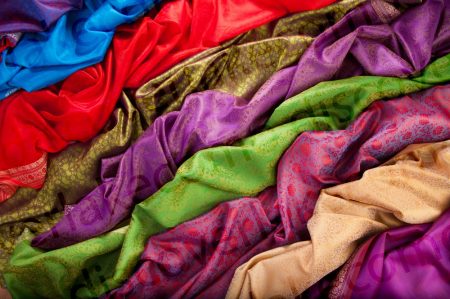Lake Como Silk
Despite Lake Como providing the boutiques and couture artists of the world with its luxury silks, the industry seems to be a well kept secret on Italian shores. Many people assume that Milan is the place to venture for the sublime fabric, when in actual fact Como is the heart of silken history and production…
Discovering Como’s silks
Despite its fine reputation, it is possible to find seductive silks in Como for a reasonable price, if you look hard enough. Scour the markets and boutiques and you will be able to discover a melange of couture designer pieces and chic samples, some of which are put together by young aspiring Italian designers. Sometimes it’s almost more valuable to shop in the markets rather than in the designer shops, as you might discover something a little edgy; an exquisite off-cut no one has or one of the next Valentino’s youngest designs. Factory shops are also an excellent place to look for unique pieces. Silk ties and scarves are particularly popular in Como, as well as tailored blouses and shirts. Some of the big designer names who rely on Como’s silk houses include Yves St Laurent, Karl Lagerfield, Chanel, Armani, Hermes, Ferre, Valentino, Versace and Ungaro.
Today, Como produces 85% of all silk made in Italy and provides 70% of Europe’s silk.
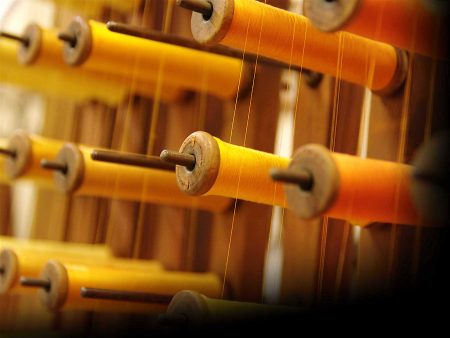 A Silk History
A Silk History
Silk has been part of Como’s existence for over 4,000 years, which takes us right back to the Middle Ages. The history of silk interestingly begins with some cheeky smuggling; in the sixth century silkworms were smuggled out of China in bamboo canes and brought to the eastern Mediterranean by two Persian merchants disguised as priests. From there, breeding of the silkworms spread to Sicily and continued further north. However it was on the turn of the 18th century that Como became Italy’s largest silk producer, with the help of mechanical methods replacing older ones. Sadly, silkworm breeding died down in Italy after World War II, but the industry is still thriving in Italy and Como, which imports the silkworms from China before the silk is woven, coloured and tailored to design in Italy. Today Como provides silk for the fashion houses of Milan, Paris and New York, as well as Italy.
The reason that Como became the heart of silk production is believed to be twofold; firstly there was an ample water supply from Lake Como and the nearby northern Alpine streams and secondly, mulberry farming thrived in the Po River Valley to the south. The ‘culture of beauty’ as Guido Tettamanti calls it, may have something to do with Como’s success all as well; a fine fabric demands an exquisite landscape and the sweeping Swiss peaks and sparkling Lake Como provide this pleasing backdrops to aestheticists around the world. Thus the cultivation of silkworms seemed to make perfect sense!
‘The silkworm is a snob; he’ll eat anything, but he only produces silk if he eats Mulberry!’ Moritz Mantero.
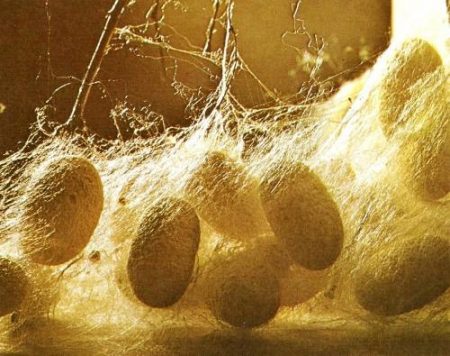 The Art of a Silkworm
The Art of a Silkworm
Silkworms are clever little creatures and are the sole reason we are able to produce such superb silks, or any silk at all for that matter. Once the silkworm has stopped growing, it produces a very thin thread which then wraps around itself, creating the cocoon which would eventually turn it into a butterfly. This final part of the process must be stopped in order to unwind the cocoon and obtain one single silk thread which will be around 1500 metres in length! This one thread will then be joined with others in order to become strong enough to be used in production, before being combined with thousands to create a silken masterpiece which could find itself on the catwalks of the world.
The ‘Silk District’ in Como annually produces 3,200 tonnes of silk!
Silk Shopping Hotspots
A wonderful place to shop for silk in Como is in the ivy-entwined Villa Sucota, where the upstairs boutique holds all sorts of beautiful silk crafts made by the Ratti silk company. Pillows, ties, dressing gowns, scarves and blouses in sensual paisleys, burning ambers and verdant emeralds can all be found there, as well as Ratti’s suede-like soft Daino silk. For home silk furnishings including picture frames, make-up bags, black silk pyjamas and jewellery boxes, visit The Seta Shop in Via Manzoni and also in Via Varesina. There are also pretty cavern like grottos embellished with bolts of fabric for sale dotted around Como, perfect for any aspiring designers who want to try their hand at working with silk. Brianza boasts a ‘Silk Road’ of boutiques and Bellagio is perhaps the place to visit for the most affordable silks; Azalea is a beautiful shop for this. Just remember that most shops in Italy close for lunch, so perhaps phone before you visit!
It takes 100 cocoons to weave one tie.
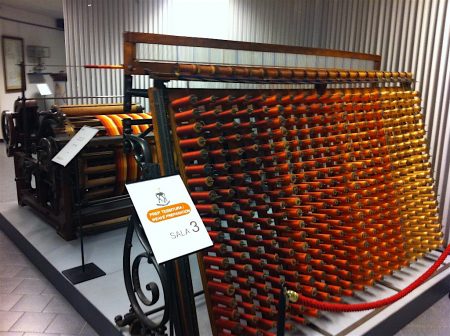 The Silk Museum
The Silk Museum
Como is now home to the Educational Silk Museum which cherishes and displays machines, silks, objects, documents, samples and instruments which collectively tell the tale of the past of silk production. Even today, Como is known around the world as the ‘City of Silk.’ The museum often runs workshops such as ‘Silk Reloaded’ for anyone interested in the textile industry, as well as more specialised classes such as bobbin lace workshops and there are guided tours for visitors running daily.
Mantero, a Como silk manufacturer, is the sole producer of Chanel scarves.
Como’s Silk Success
Como is to luxury silk what Dubai is to skyscrapers; it is the admired professional of its field. Thanks to its relative locality to world renowned fashion houses, Como is able to meet demands for fast-changing collections and fashions, as well as small scale seasonal orders, thus keeping its finger on the pulse of designers’ demands and being capable of feeding an industry whose eye is constantly fixated on the future.
‘The Como suppliers speak the language of the fashion houses.’ Guido Tettamanti, Italian Silk Association.
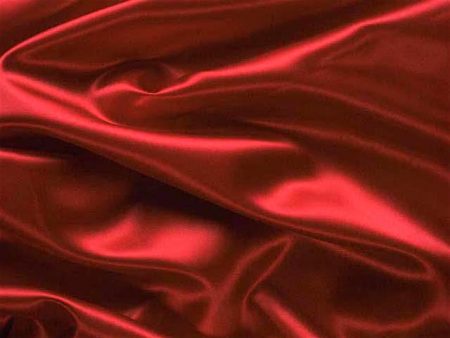 Seeing Silk Around Como
Seeing Silk Around Como
There are reminders of the silk industry everywhere in Como; from quaint silk shops with starburst swathes of fabric to the Loom Cafe, it is evident that the Italian town takes pride in its most precious cargo. After all, the silk trade is one of intense craftsmanship and skill; try and visit the museum where you can watch coloured dyes being gently penned into the fabric, which then radiantly soaks up the shade. Spinning mills are also a sight to be beheld, as you can watch thousands of silken threads laced together on wooden weaving mechanisms; their colours intertwining vividly.
More than 23,000 Comaschi, or people from Como, work in the silk business.
Keeping It In The Family
Despite such colossal numbers, Como’s silk industry remains predominantly family based. Of course today technology often takes precedence over handmade methods, although many of the final stages of production will remain handcraft skills for many years to come, but much of this knowledge is bred in ancient family-run fashion houses in Como. The secrets of silk haven been well-kept and remain close to the chests of their discoverers to this day.
It is the silk houses in Como who execute world-renowned designers’ visions.
